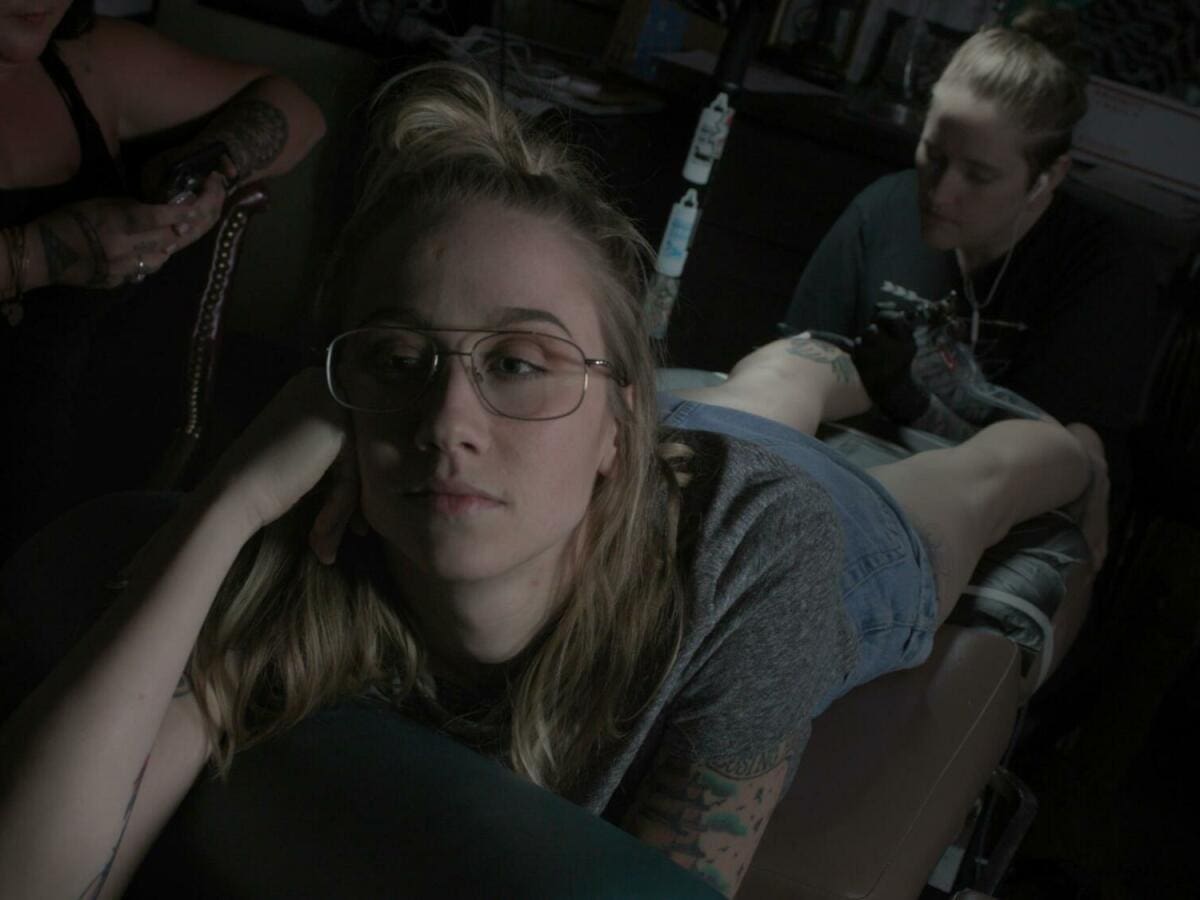Warning: Major Spoilers!
When I first listened to Serial back in 2014, like a lot of the world, I was captivated. Following the story of Adnan Syed, journalist Sarah Koenig took me on a journey of faulty evidence, bad investigators, and edge-of-my-seat interviews.
Koenig’s podcast, alongside others, made me a strong believer in the true crime genre. It made legal issues and justice accessible, and it was a form of citizen journalism which used the very valid distrust of police and the state as a reason to reexamine supposedly solved or cold cases.
Citizen Sleuth, a documentary about the process of making the real true crime podcast “Mile Marker 181” is so chilling because it reframes all the supposed democratising benefits the true crime genre claims to have. We follow Emily Nester as she investigates the suspicious death of a teenager named Jaleayah Davis in her small West Virginia town. While acknowledging the good intent behind these projects, director Chris Kasick exposes the damage true crime can do to the very people it tries to give a voice to.
The documentary starts by setting up the necessary atmosphere for a true crime podcast to emerge. We hear rumours about what really happened that night when Jaleyah got into a car with friends and ended up crashing on the highway. “You don’t have to be a conspiracy theorist to believe there is a lot of corruption,” one local journalist puts it when asked about the case. “She is an African-American woman,” a local prison guard agrees, pointing out the history of racial prejudice in the town.
If you were a good citizen who heard these concerns, would you not also want to ask more questions? The podcast started for all the right reasons. Nester herself is the perfect host to take on the investigation. “Why not me?” she asks while recounting that she has been a local all her life and used to work at Buffalo Wild Wings — Nester emphasises her lack of experience as something to be proud of. “People think it’s glamorous…” she says when showing off her home set up which is reminiscent of a small Youtuber, “I used to record in the closet.” Because of this genuinely approachable demeanour, the audience trusts her. She often decentres her own background, “it’s important I don’t tell you much about myself,” which for the democratising purpose to work this persona — whether genuine or not — is essential.
Her closeness and proximity to the case becomes a symptom of a much larger problem the documentary identifies. Because it’s set in a tight knit community, the initial fan base and buzz around the podcast came from locals, many of whom had vested interests in the outcome. Some saw it as an opportunity to put the town on the map. They also take pride in Emily, “You can solve a crime without a degree,” her mother continues, her daughter proving that you don’t need to be a big shot from the FBI to get it right.
This closeness really becomes a concern when Emily starts to present the facts of the case alongside some of the more sensational theories. Her mantra, “being local was going to be advantageous,” is undercut by the really invasive and intimate photos of the victim and her friends’ personal lives being shown as a way to create sympathy. People’s relationships are examined for cracks, old high school drama is brought up as evidence. When Nester learns one of her suspects, Kristen, “is not kind to animals,” she uses it as evidence to build a profile on her character.
There is a reason the legal system has such strict privacy laws around evidence. When you start from a point of finding the truth at all costs, it’s easy to end up here and not realise it.
If anything, I wish Kasick spent more time on how this affected the local community. We get to hear from Kristen, and other suspects, Freddie and Caite, in confronting interviews where we see how mentally damaging it is to be dragged through the media cycle. They were part of the car crash as well; Jaleayah was their friend.
Maybe the end would have justified the means if it was a big cover up, police corruption, or genuine abusive friendships that led to Jaleayah’s death. However, as Emily herself finds out, it was just a horrible accident. Every theory pointing to foul play is disproved by experts she hires, and the victim’s family has a troubling history of false accusations against the police.
The expectations for a big reveal and for justice make it hard for Nester to tell the truth. When asked on camera by Kasick, “What’s the endgame here?” she responds, “It is hard to talk about it as a murder when you think it’s an accident.” She ultimately tells her audience. The ending is a sombre one but Nester’s advice to place victims at the forefront of citizen journalism is paramount.
“People use Jaleayah as a projector screen” — whether as a placeholder for distrust in the system or individuals, Jaleayah was used. Kasick’s point is simple: rather than scrutinising every exhibit to death, we need to take a step back and look at the big picture.
Citizen Sleuth is showing at the Sydney Underground Film Festival on the 8th and 9th of September.





